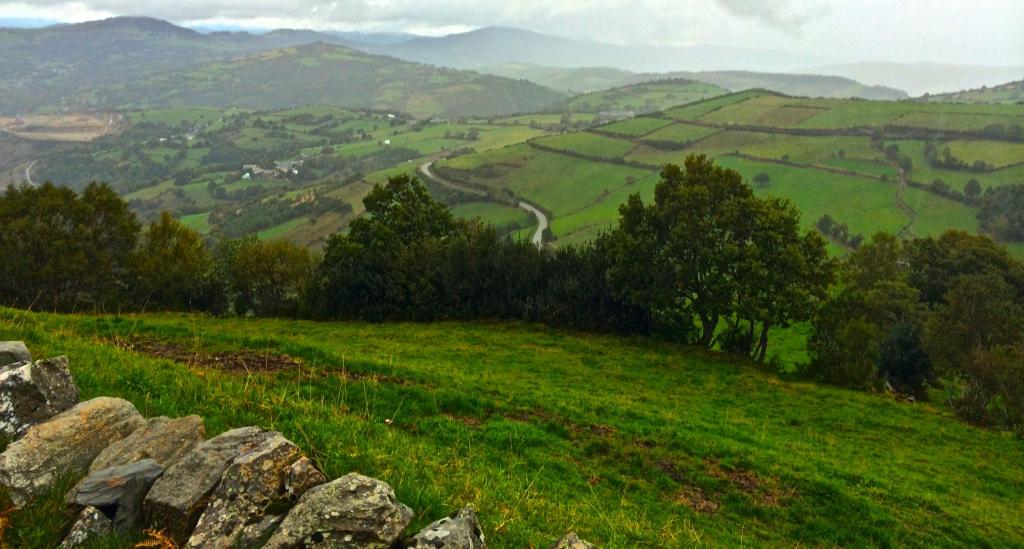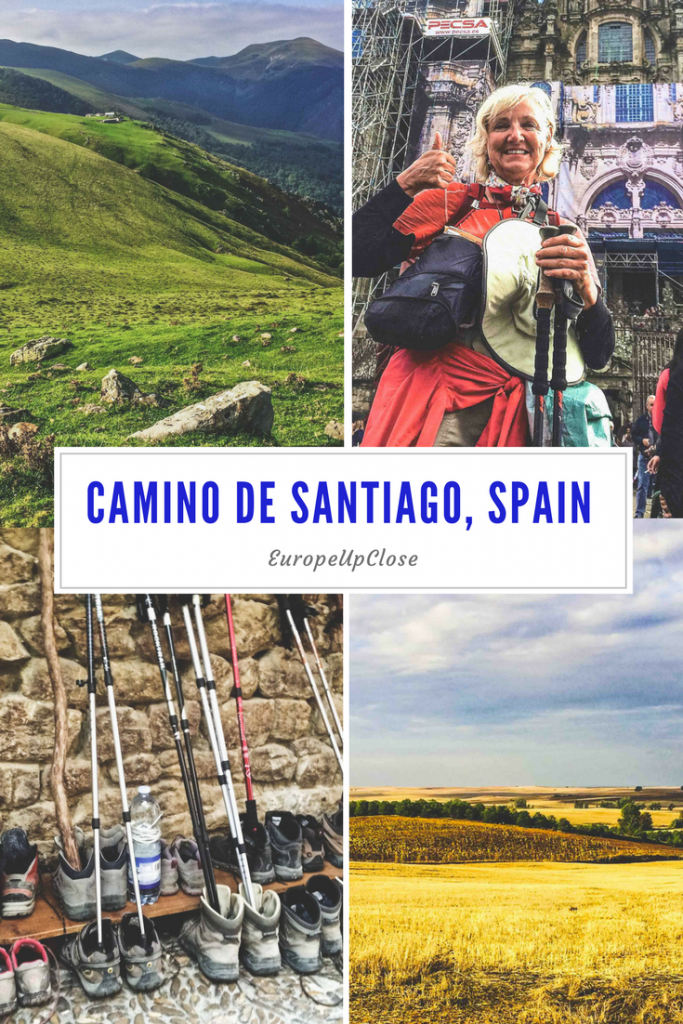 Camino de Santiago: A Journey for the Body, Mind, and Soul
Camino de Santiago: A Journey for the Body, Mind, and Soul
“A pilgrimage across northern Spain to the sanctuary at Santiago de Compostela is the finest journey in Spain,” wrote Pulitzer Prize winner, James Michener, in his non-fiction classic Iberia.
The Camino de Santiago: At first it was hard to wrap my mind around taking six weeks to walk 500 miles from France through Spain, along a 1200-year-old path, following yellow arrows painted on rocks and trees. Living out of a backpack? Sleeping in a bunk room? Being a pilgrim? It seemed impossible.
It was not only possible but maybe the best thing I’ve ever done for myself. And if I could do it, so can you.

El Camino de Santiago – A Path with Many Names
El Camino de Santiago (Depending on the country, it’s also called The Way of St. James, Le Chemin de Saint Jacques, Der Jacobsweg, Camino di Santiago, and St. Jacobsroute) is a route honoring St. James, one of Christ’s disciples. The bones of the saint are enshrined in the cathedral at Santiago de Compostela. For devout Christians, the heavenly reward for completing the pilgrimage is a plenary indulgence, the forgiveness of sins.
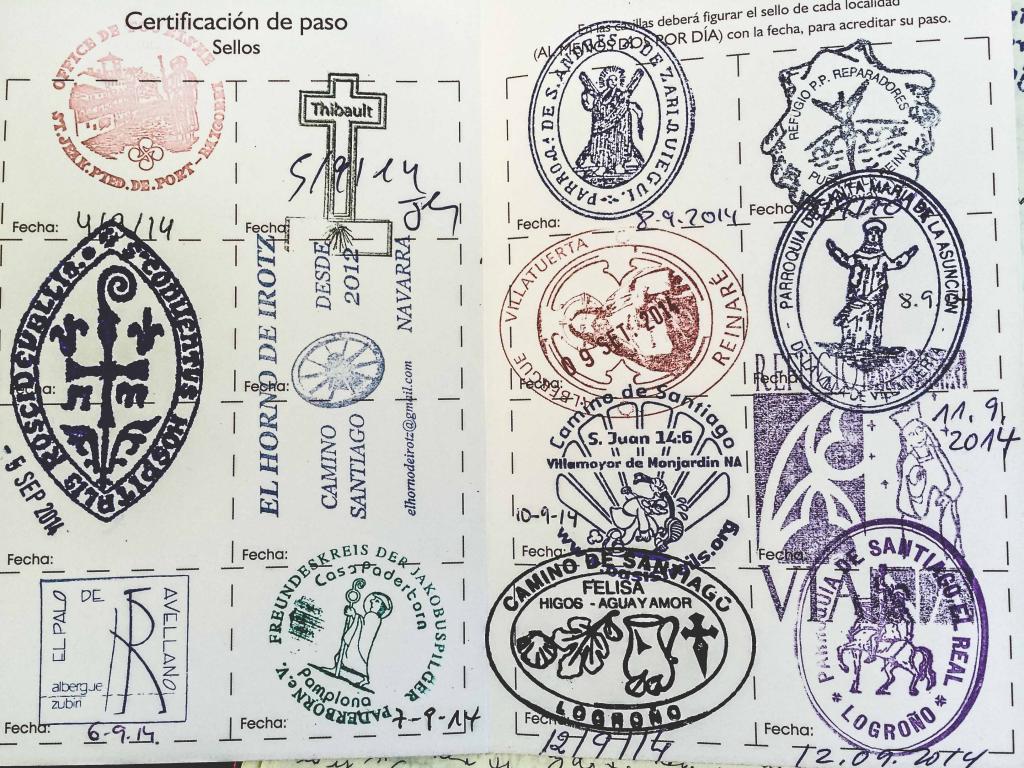
Camino Frances
Every year, over 250,000 people from all over the world embark on the Camino Frances, the main path across Spain. Not everyone seeks religious dispensation. Some do come for spiritual reasons, but also for the history and architecture, the cuisine of four Spanish regions, the physical challenge, and the sheer beauty of the walk.
They set out from the small village of St. Jean Pied-de-Port in the Pays Basque region of southwest France. The Pyrenees mountains frame the town, waiting for pilgrims to cross over into Spain on the first day, descending into Roncesvalles, where a warm shower and clean bunk await. From there, it’s only 790 more kilometers to Santiago.
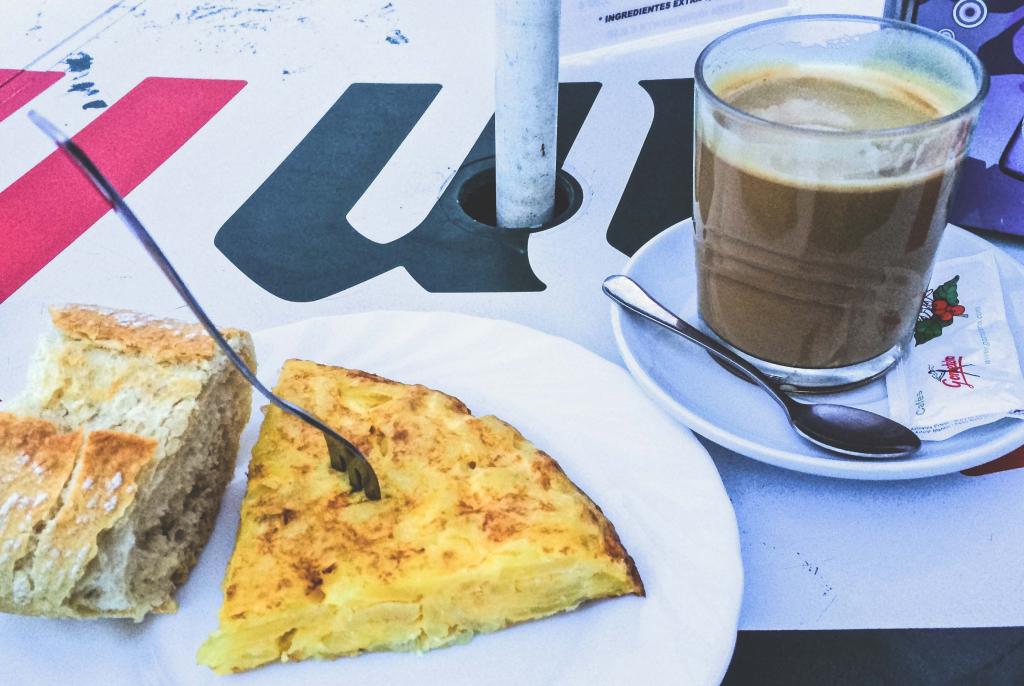
Daily Life as Pilgrim on the Camino de Santiago
Carrying only a backpack (recommended to be no more than 10% of body weight) and the pilgrim passport called a Credential–which entitles pilgrims to stay in the inexpensive hostels (albergues or refugios) along the entire route—I set out each morning with a vague plan of how far I would walk before stopping for the day. Some days, I felt tired or wanted to enjoy a lovely village, so I would end early, at twelve miles (19 km). Other days, I felt so energetic that I would cover twenty miles (32 km). The Camino isn’t a race; it’s an individual experience that adapts to the pilgrim, not the other way around.
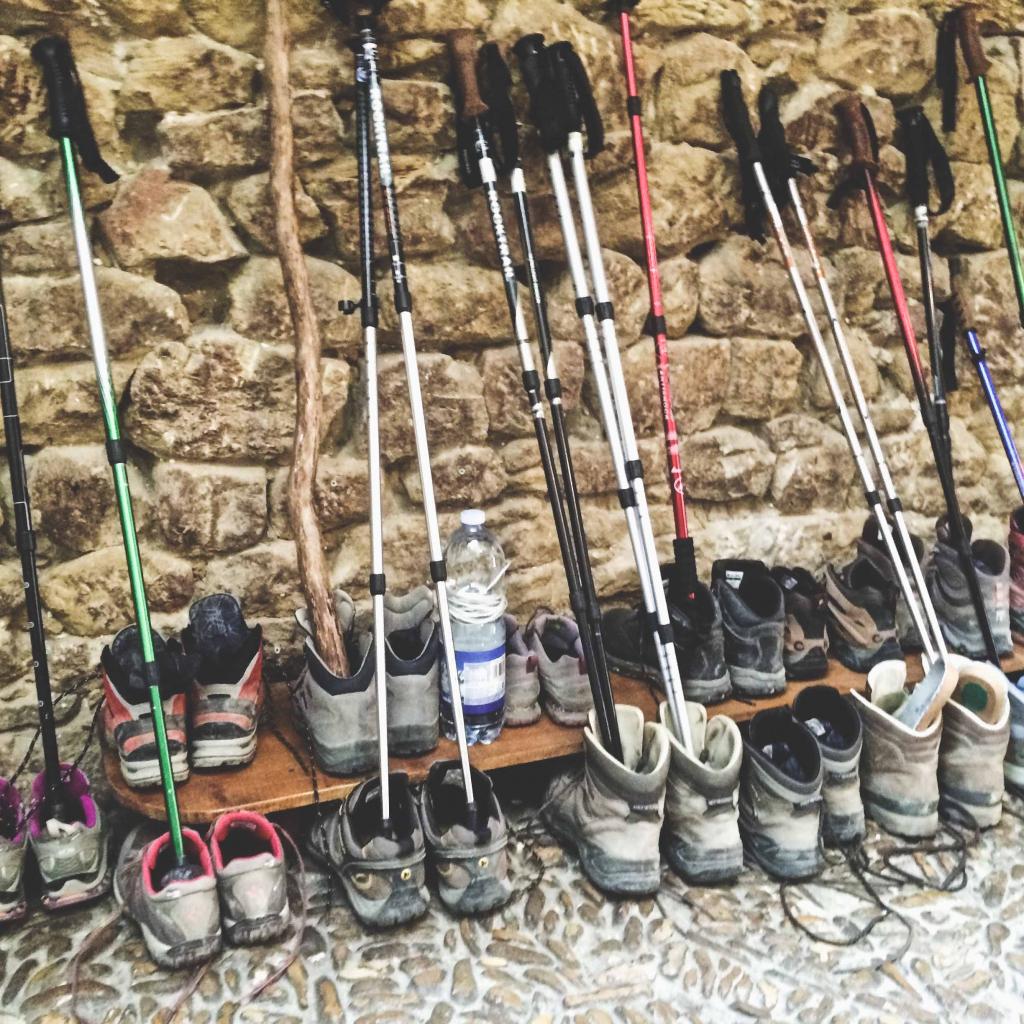
When Walking Becomes Your Only Purpose
“What exactly do you do all day?” my friends asked me. They were genuinely puzzled, not understanding that simply walking was my purpose. Pilgrims must be out of the Albergue by 8 am, so the hosts can clean before the next wave begins to arrive in early afternoon. No matter what the weather, off we went. While some albergues provide a light breakfast, I preferred walking in the fresh morning air for awhile, until I was ready to stop at a bar for a café con leche (coffee with hot milk) and a slice of tortilla (potato and egg pie) or tostada (toast). I looked forward to the simple breakfast, costing only a few Euros. Fresh-squeezed orange juice? Just €1.

Spanish Bars along the Camino de Santiago

Bars in Spain are not just for drinking alcohol, as in the United States. They open in the morning, serving coffee and pastries. All day, people drop in for a quick espresso, soft drink, or glass of wine. Housewives come in before or after going to the market. Students stop for a snack after school. Retired men sit in the sun and talk.
Even the tiniest village has a bar. Pilgrims stop all day long for refreshment, toilets, wi-fi…and to chat with friends made along the way. After checking in to the Albergue in the afternoon, a bar is perfect for relaxing, journaling, and deciding on tomorrow’s route. I truly missed bars when I returned home.
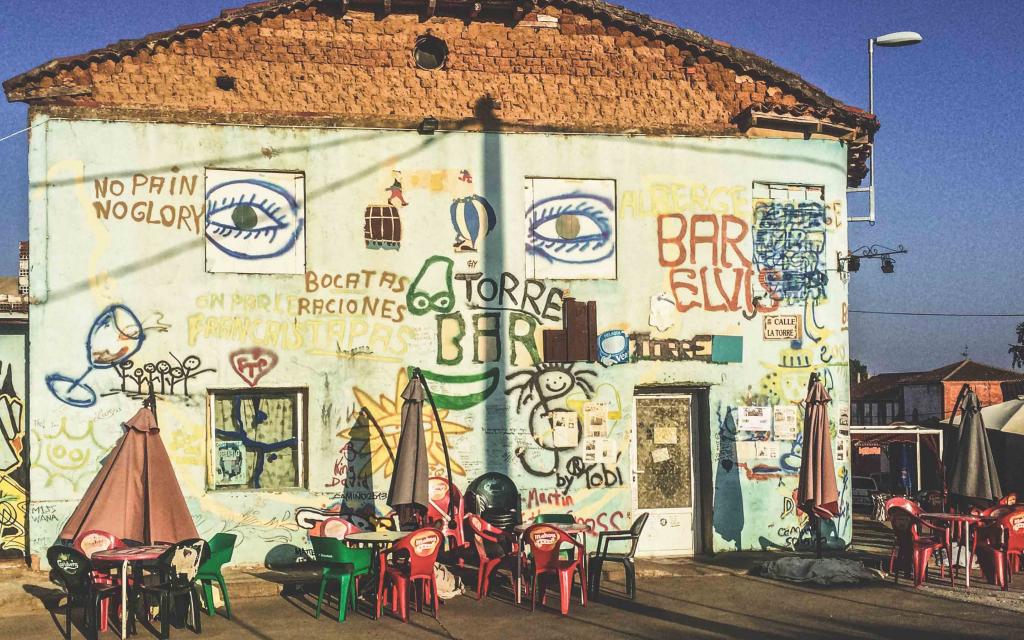
Follow the Yellow Arrow
After a break, it’s back to the path. Through fields, across highways, up and down mountains. Big cities with magnificent cathedrals, villages with only a hundred residents. Always following the yellow arrows, sometimes with the help of friendly locals who happily point lost pilgrims in the right direction. (Once, when I was confused, two men in a shop tapped on the window and gestured which way I should go. Often, locals would stop what they were doing to walk with me until I was back on the proper route.)
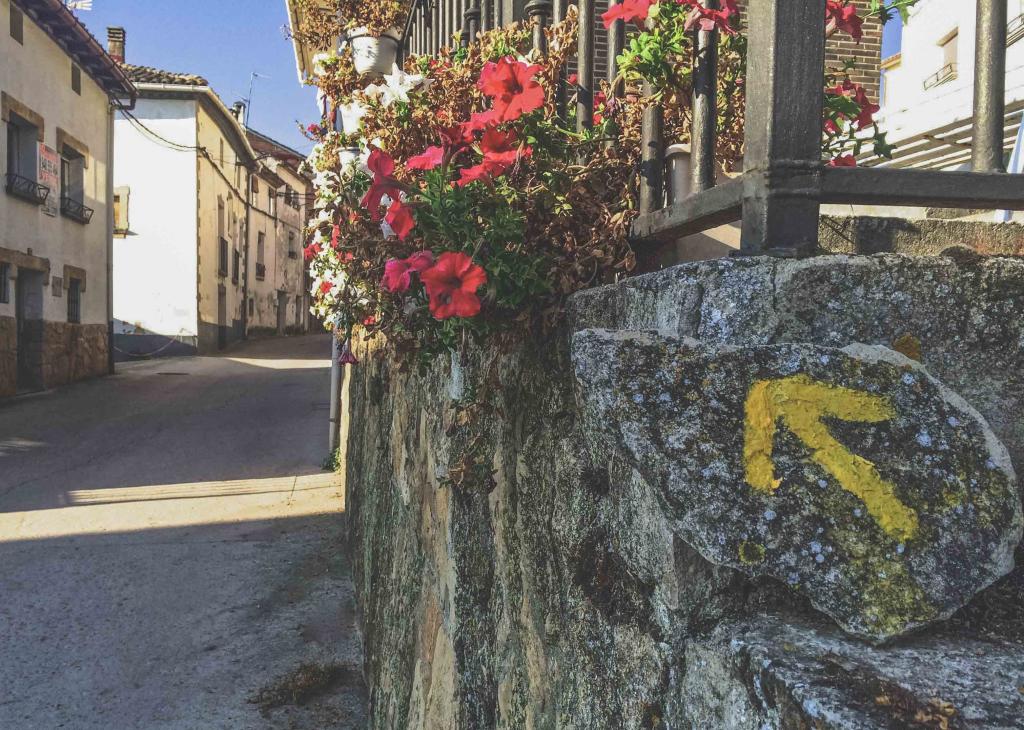
Staying at an Albergue on the Camino de Santiago
When I was at the day’s destination, I’d find an Albergue. Showing my Credential (it must have one stamp every day, two stamps during the final 100 km), my American passport, and paying the reasonable fee of about €10, I was “home” for the night.

Claiming my bunk, I’d quickly shower and put on clean clothes. Then it was off to find a wash tub to scrub that day’s outfit so it could hang and dry before morning. After that: freedom! Explore the town, write postcards, find dinner, send emails, post photos on social media. Talk with other pilgrims—every person has a different experience, and it’s fun to exchange stories. It was a delightful and soothing routine, day after day.
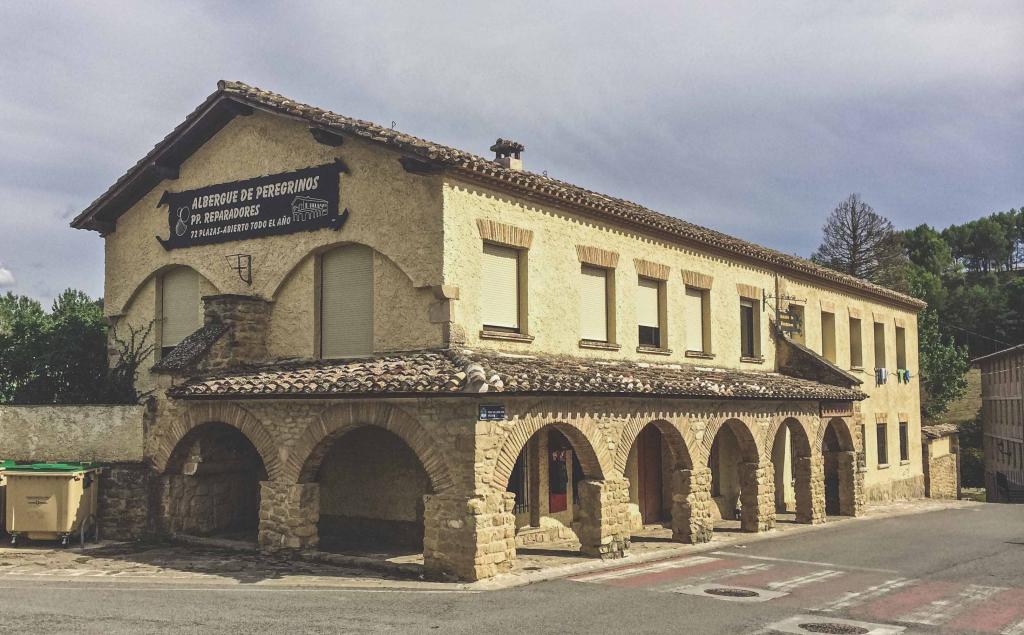
The Three Parts of the Camino
It’s said that the Camino has three parts: one each for the body, mind, and soul. The first third the pilgrims become physically fit and build endurance. I felt my body get stronger every day.
Then comes the second portion: Across the broad, flat meseta—Spain’s equivalent of America’s Great Plains—pilgrims can simply walk and enjoy time to reflect. Some call this section monotonous; I called it peaceful. Just me, the harvested fields, and the sky. It develops discipline and determination.
The final third, as the journey nears its end, is dedicated to the soul. Now pilgrims are asked to consider their purpose. Even those who have walked for recreation find they become more thoughtful. By the time a pilgrim reaches the cathedral, there is often a sense of accomplishment and contentment.

A Pilgrim’s Guide to the Camino de Santiago
How long does it take to walk the Camino de Santiago?

According to John Brierley’s indispensable book, A Pilgrim’s Guide to the Camino de Santiago, the Camino Frances can be completed in 28 days. That’s straight through, without a day off. Pilgrims walking for religious reasons often choose 33 days, each day representing a year in Christ’s life. Me? My only time constraint was my return date back to the United States, so I walked as I pleased. An extra day each in the spectacular cities of Burgos and Léon. Still, each mile adds up, and I arrived at the cathedral after 38 days, with four days to spare.
Arriving in Santiago de Compostela

After I had found a place to stay, I collected my Compostela, proof that I had walked 500 miles. I was an Official Pilgrim. After exploring the beautiful city of Santiago de Compostela, I welcomed other pilgrims I’d come to know along the way. I returned to the cathedral dedicated to St. James, hugged the bejeweled Apostle behind the altar, and witnessed the emotional Pilgrim’s mass, where every day the names of pilgrims who have arrived are announced.
The Camino Frances is the most popular pilgrimage route, but Europe has other paths that lead to St. Jean Pied-de-Port. In ancient times, the journey began when a pilgrim stepped out of his or her home. It’s not so different today. I met a man who had started in Amsterdam, two months earlier.
A Pilgrimage with over 1000 Years of History
When you’re ready for a spectacular adventure, consider hiking the Camino de Santiago. Take part in a ritual that has been intact since the Archbishop of Le Puy, in central France, walked in 950 AD. New friends will appear; you will find your own “Camino family.”
More than once, I was told, “The Camino changes you. Be prepared.” They were right. I learned to appreciate simplicity and lost my cynicism. I embraced each day as it unfolded and remembered gratitude. After returning home, I felt renewed, and have remained that way.
The Camino challenges you but pays you back a thousand-fold. Buen Camino!
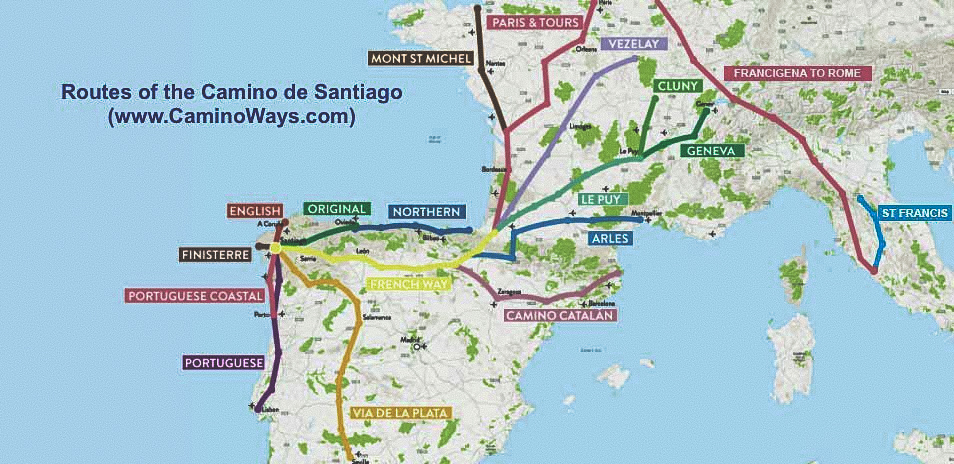
Camino de Santiago Resources:
American Pilgrims on the Camino
Brierly, John: A Pilgrim’s Guide to the Camino de Santiago: St. Jean-Roncesvalles-Santiago
Ball, Suzanne: Follow the Yellow Arrows: A Guide to Planning and Packing for the Camino de Santiago
Written by and photos by Guest Contributor Suzanne Ball for EuropeUpClose.com. Suzanne is a travel writer based in the Chicago area. Her specialty is solo, budget, and Boomer travel. After walking the Camino de Santiago, she published an eBook, “Follow the Yellow Arrows: A Guide to Planning and Packing for the Camino de Santiago.” Upcoming trips: A French Immersion experience in Quebec and then, off to Cuba. Her motto: “If I can do it, so can you!” Find her at www.travelsmartwoman.com.

